
Long term reliability of bonded surfaces exposed to mechanical stresses is of vital importance in assessing defect free engineering. Master Bond high performance adhesive systems are designed to resist cyclic deformation and damage caused by creep/fatigue. These compounds have successfully withstood exposure to cyclic loading at elevated temperatures and have a job proven record of protection against creep/fatigue. Leading manufacturing companies have selected Master Bond to meet demanding specifications and have employed our products to assure steady dependable joining of substrates under harsh conditions.
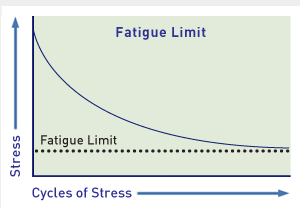 Creep typically occurs due to mechanical stresses over time, and leads to a permanent deformation of the material, while fatigue occurs due to cyclical loads and typically leads to a fracture in the material. There are multiple methods to gauge the creep and fatigue resistance properties of glue joints. Some of the factors that influence these properties are the type of adhesive, the type of substrates, the geometry of the bonded assembly, the frequency as well as the magnitude of mechanical stress, the duration of loading, and the temperature cycling rates. To optimize the creep/fatigue resistance, the processing of the adhesive is critical. Some of the important steps include proper surface treatment, proper application and ensuring that the adhesive is cured properly as per the manufacturer's instructions. Bonding thickness,
and depth, along with the width, and length of the substrates being bonded are also of prime importance.
Creep typically occurs due to mechanical stresses over time, and leads to a permanent deformation of the material, while fatigue occurs due to cyclical loads and typically leads to a fracture in the material. There are multiple methods to gauge the creep and fatigue resistance properties of glue joints. Some of the factors that influence these properties are the type of adhesive, the type of substrates, the geometry of the bonded assembly, the frequency as well as the magnitude of mechanical stress, the duration of loading, and the temperature cycling rates. To optimize the creep/fatigue resistance, the processing of the adhesive is critical. Some of the important steps include proper surface treatment, proper application and ensuring that the adhesive is cured properly as per the manufacturer's instructions. Bonding thickness,
and depth, along with the width, and length of the substrates being bonded are also of prime importance.
Master Bond Supreme 10HT was cited as being capable of withstanding a series of aging tests set by the MIL-STD-883H, (200°C exposure for 1,000 hours), in a bonding application. There was no significant drop in its strength value after this exposure indicating excellent creep resistance. It was also tested for thermal cycles from -20 to 180°C, and the product was found to be tough enough not to crack, while still maintaining its strength profile, indicating very good fatigue resistance. Read more here.1
Source
1Maeder, Thomas, École Polytechnique Fédérale de Lausanne et al. "Packaging technologies for high temperature control electronics." https://www.researchgate.net. Accessed 7/20/2016.Master Bond Popular Products
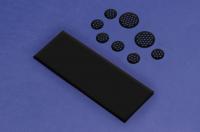 |
FLM36-LO NASA low outgassing approved B-stage epoxy adhesive. Tough and flexible. Elongation is greater than 50%. Thermally conductive/electrically insulative. Withstands rigorous thermal cycling. Can be die cut into custom shapes. Squeeze out is minimal. Ideal for applications requiring precise bond lines. Resists up to +500°F. |
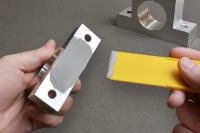 |
Supreme 10HT One part structural epoxy with high bond strength and excellent adhesion to similar and dissimilar substrates, especially composite materials. Requires oven curing at 250-300°F. NASA low outgassing approved. Serviceable from 4k to +400°F. Tough and durable. 85°C/85% RH resistance. |
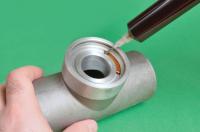 |
Supreme 45HTQ Two component, toughened, quartz filled epoxy with exceptional abrasion resistance. Heat curing system. Long working life after mixing. High compressive strength. Superb dimensional stability. Serviceable from -60°F to +450°F. Withstands exposure to petrochemicals acids, bases, solvents. Good strength retention at elevated temperatures. Successfully tested for 1,000 at 85°C/85% RH. |
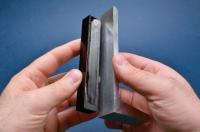 |
Supreme 11HT-3A Service temperature from -100°F to +400°F. High bond strength to similar and dissimilar substrates. Excellent durability, toughness, impact resistance. Convenient 100 to 50 mix ratio by weight. Withstands prolonged exposure to water, oils, fuels and most organic solvents. Aramid fiber reinforcements assures outstanding dimensional stability. |
